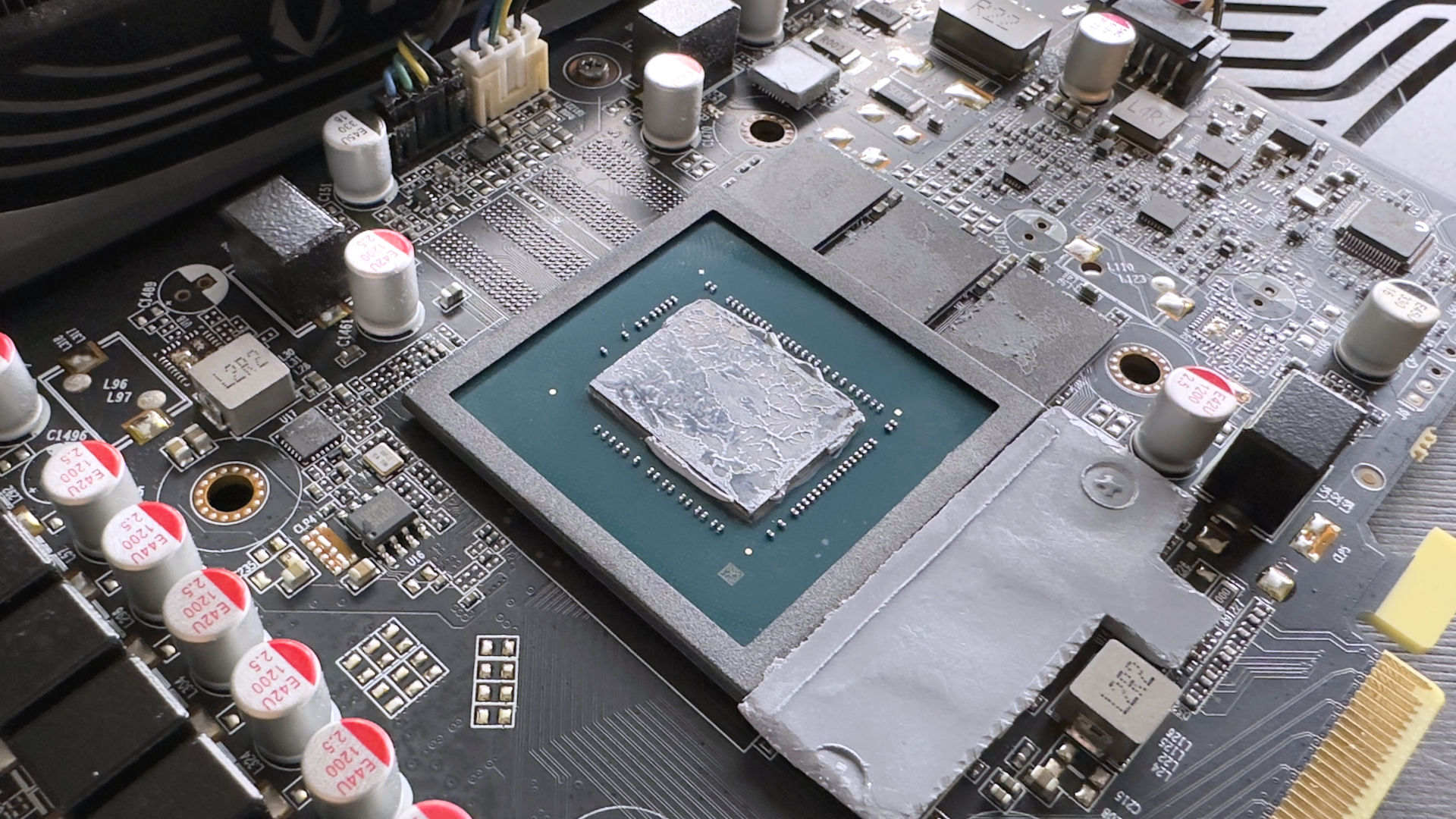Nvidia's third-party RTX 40-series GPUs are losing performance over time thanks to rubbish factory-installed thermal paste
It's not just about bad hotspots, the whole chip ends up getting hotter, causing it to hit thermal limits quicker.

Modern graphics cards use lots of power and all of it is turned into heat. So if you're paying many hundreds of dollars for a powerful GPU, you'd expect no expense to be spared on the cooling system. It turns out that for many Nvidia RTX 40-series vendors, the expense is being spared and cheap, poorly applied thermal paste is leading to scorching high hotspot temperatures and performance degradation over time.
That's the conclusion hardware tester Igor's Lab has come to after testing multiple GeForce RTX cards, analysing temperatures and performance, and discovering that the thermal paste used by many graphics card vendors is not only sub-standard for the job but is also poorly applied.
I have four RTX 40-series cards in my office (RTX 4080 Super, 4070 Ti, and two 4070s) and all of them have quite high hotspots—the highest temperature recorded by an individual thermal sensor in the die. In the case of the 4080 Super, it's around 11 °C higher than the average temperature of the chip. I took it apart to apply some decent quality thermal paste and discovered a similar situation to that found by Igor's Lab.
In the space of a few months, the factory-applied paste had separated and spread out, leaving just an oily film behind, and a few patches of the thermal compound itself. I checked the other cards and found that they were all in a similar state.
Igor's Lab examined the thermal paste used on a brand-new RTX 4080 and found it to be quite thin in nature, due to large quantities of cheap silicone oil being used, along with zinc oxide filler. There was lots of ground aluminium oxide (the material that provides the actual thermal transfer) but it was quite coarse, leading to the paste separating quite easily.
Removing the factory-installed paste from another RTX 4080 graphics card, Igor's Lab applied a more appropriate amount of a high-quality paste and discovered that it lowered the hotspot temperature by nearly 30 °C.
But it's not just about the hotspots. Cheap, poorly applied thermal paste will cause the performance of a graphics card to degrade over time because GPUs lower clock speeds when they reach their thermal limits. PC enthusiasts are probably very comfortable with replacing a CPU's thermal paste regularly but it's not a simple process with graphics cards.
The biggest gaming news, reviews and hardware deals
Keep up to date with the most important stories and the best deals, as picked by the PC Gamer team.
If you've handed over the better part of $1,000 for your graphics card, you'd be justified in thinking that this shouldn't be a necessary job for years—certainly not within a few months of having the card.

Best gaming PC: The top pre-built machines.
Best gaming laptop: Great devices for mobile gaming.
In my case, changing the paste on the RTX 4080 Super didn't improve the hotspot delta (so I'm going to try some PTM7950 at some point) but the overall die temperature did drop by a few degrees. I'm regularly monitoring all four cards to see if the temperatures start to creep up but I also feel that I really shouldn't have to do this.
While Nvidia enjoys huge margins on its GPUs, graphics card vendors aren't quite so lucky, but they're not so small that spending a few more dollars on better thermal paste isn't going to bankrupt the company.
Mind you, if they all started using PTM7950, then none of this would be an issue—the cards would run cooler and would stay that way for much longer. The only problem then is that you'd hear the coil whine over the reduced fan noise.
Ah, PC gaming is never easy, is it?

Nick, gaming, and computers all first met in 1981, with the love affair starting on a Sinclair ZX81 in kit form and a book on ZX Basic. He ended up becoming a physics and IT teacher, but by the late 1990s decided it was time to cut his teeth writing for a long defunct UK tech site. He went on to do the same at Madonion, helping to write the help files for 3DMark and PCMark. After a short stint working at Beyond3D.com, Nick joined Futuremark (MadOnion rebranded) full-time, as editor-in-chief for its gaming and hardware section, YouGamers. After the site shutdown, he became an engineering and computing lecturer for many years, but missed the writing bug. Cue four years at TechSpot.com and over 100 long articles on anything and everything. He freely admits to being far too obsessed with GPUs and open world grindy RPGs, but who isn't these days?

